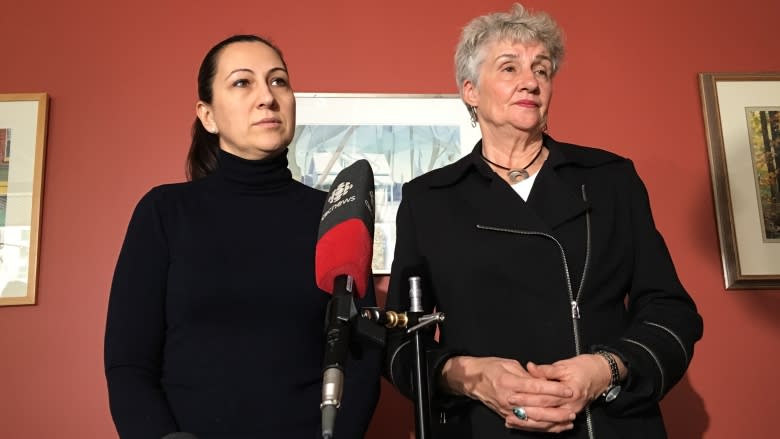Councillors want Torontonians to help as pressure on city shelters grows
This April, nearly 1,000 refugees will spend the night at a Toronto shelter.
With that number steadily climbing and housing getting more and more expensive, city councillors are hoping to build more shelter spaces across the city.
Coun. Paula Fletcher (Ward 30, Toronto-Danforth) admits that with shelters at 97 per cent capacity — far higher than council's committed target of 90 per cent — the pressure is on.
On Friday, Fletcher and Coun. Ana Bailao (Ward 18, Davenport) touted the recommendations in a new report from the Shelter, Support and Housing Administration that recommends working closely with the community when building new facilities.
"We've never asked people, 'Do you want to help?' And we know, Torontonians want to help," Fletcher said.
The city is working to open at least 10 new shelters across Toronto, four of which are slated to open in 2017. Those shelters will be the first test of a new system that would put "community facilitators" in place to help them fit in with their neighbourhoods.
While those shelters are opening, Fletcher says the city has to be have a plan in case others close. The 543-bed Seaton House is also set to close for redevelopment this year.
"We have to be ready," she said.
Clearer picture of refugee shelter usage emerges
Some 20 per cent of those who rely on city shelters identify as refugees, city officials said in a statement to CBC Toronto.
More than 80 per cent of those refugees — many of whom may actually be asylum seekers at this time — are with their families. City case workers report many are coming from African countries including Nigeria, Ethiopia, and Eritrea.
Because Toronto is a sanctuary city, people don't have to disclose their immigration status to receive services, though many do.
The number of people on average using shelters nights in April is 994. That's up from 945 in March and 839 in February.
Report aims to ease public's fears about shelters
In the past, proposed shelters have met with a backlash from people concerned their presence may lead to problems, or reduce property values.
Fletcher admits the way the city's gone about setting up shelters has angered people in the past, but said she hopes the new recommendations, the result of consultations with everyone from developers to shelter users to public relations specialists, will help the city "turn the corner."
Bailao says in the future the city will no longer just seek out real estate for shelters, but instead evaluate the needs of certain neighbourhoods and provide shelter space based on that need. Bailao also wants to provide "wrap-around" service and 24/7 support, not just a bed and a roof.
The new recommendations will be debated at next week's meeting of the Community Development and Recreation Committee.



